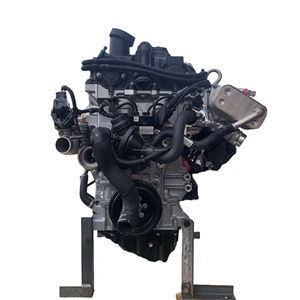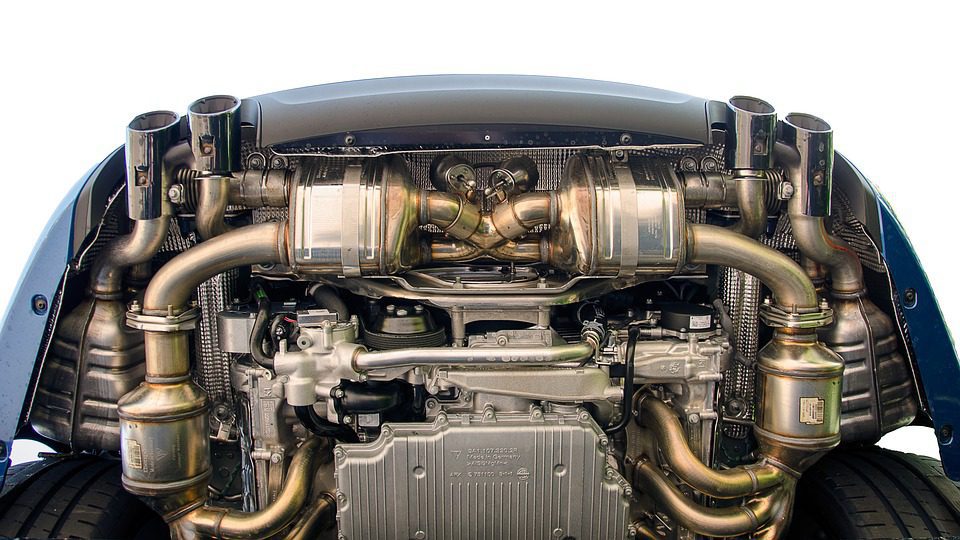Locating the most effective Offers on Opel Corsa Engine Parts
Locating the most effective Offers on Opel Corsa Engine Parts
Blog Article
Exploring the Inner Functions of a Compact Lorry's Engine System
As chauffeurs, we often take for approved the detailed processes that take place within the boundaries of our automobile's engine system. In this exploration of a compact lorry's engine system, we will decipher the internal operations of this mechanical harmony, shedding light on the mysteries that drive us ahead on our day-to-day journeys.
Combustion Refine Overview
The combustion process in a small automobile's engine system is a vital device that effectively transforms fuel into power to power the car. This procedure takes place within the combustion chamber of the engine, where fuel and air mix, spark, and produce controlled explosions. The burning process consists of four major stages: consumption, power, compression, and exhaust.
Throughout the consumption phase, the piston relocates downward, reeling in a blend of air and gas right into the burning chamber. The following phase, compression, entails the piston moving upwards, pressing the air-fuel combination to raise its potency. Consequently, in the power stage, the stimulate plug sparks the compressed combination, causing a quick development of gases that requires the piston pull back. This downward movement produces the power needed to drive the lorry. Finally, in the exhaust stage, the scorched gases are removed from the burning chamber with the exhaust shutoff, preparing the chamber for the following cycle. This cyclic burning procedure is basic to the procedure of a portable vehicle's engine system, making sure efficient energy conversion for propulsion.
Piston and Cyndrical Tube Communication

The piston's exact fit within the cylinder is important for keeping optimum compression and protecting against energy loss during combustion. Limited clearances between the piston and cylinder wall surfaces make certain reliable sealing, allowing the piston to move smoothly without allowing gases to leakage past. Appropriate lubrication is additionally vital to decrease rubbing and put on in between these elements, improving longevity and performance.
In addition, the layout and materials made use of in producing the piston and cyndrical tube effect engine performance and durability. Modern engines commonly utilize lightweight yet resilient products like light weight aluminum alloys for pistons and cylinder linings to decrease inertia and boost thermal efficiency. In general, the harmonious interaction between the piston and cylinder is essential to the engine's functionality and total performance.
Gas Shot System Functionality
Gas injection systems in small lorry engines play a critical function in specifically delivering gas to the combustion chamber for regulated and effective ignition. The gas injection system works by injecting fuel into the combustion chamber at the optimum minute throughout the engine's operation (opel corsa engine). This exact timing ensures that the fuel blends equally with the air for appropriate burning, causing enhanced gas efficiency and decreased discharges
There are mostly two sorts of gas shot systems utilized in portable automobile engines: port fuel shot (PFI) and straight gas shot (DFI) PFI systems inject read review fuel right into the intake port before the consumption valve, while DFI systems inject fuel directly into the combustion chamber. Both systems have their benefits, with DFI providing far better gas atomization and PFI offering an extra affordable option.
Understanding Engine Air Conditioning Mechanisms
Effective operation of a small car's engine counts heavily on the effectiveness of its cooling devices. Engine cooling is necessary to stop overheating, which can result in severe damage and lowered efficiency. The air conditioning system in a portable car generally includes numerous components working together to manage the engine temperature. One essential part is the radiator, which makes use of coolant to absorb heat you can try these out from the engine. As the warm coolant moves via the radiator, it releases warm into the air, cooling down before returning to the engine. The water pump flows the coolant with the engine and radiator, making certain a consistent flow to regulate temperature. Additionally, the thermostat aids regulate the coolant flow to keep optimum engine temperature. Some lorries likewise have cooling down followers that turn on when added cooling is needed, such as during rush hour or hot weather condition. Comprehending these engine cooling systems is crucial for preserving the efficiency and durability of a compact lorry's engine system.

Exhaust System Parts Explained
The optimum performance of a portable automobile's engine cooling devices depends on a complementary system known as the exhaust system, which comprises different essential parts for making sure efficient discharges and engine efficiency. The exhaust manifold gathers exhaust gases from the engine's cyndrical tubes and courses them to the catalytic converter.
One essential element of the exhaust system is the oxygen sensing unit, which keeps an eye on the oxygen levels in the exhaust gases to assist manage gas consumption and ensure optimal engine performance. opel corsa engine. Additionally, the resonator may exist in some exhaust systems to minimize noise levels. On the whole, the exhaust system plays an important duty in preserving engine performance, lowering harmful emissions, and ensuring a quieter driving experience for portable car owners

Final Thought
To conclude, the portable vehicle's engine system is a complicated mix of components that function together to facilitate the combustion process, transform gas into energy, and get rid of waste gases. Comprehending the inner operations of the engine system, including the piston and cyndrical tube communication, gas injection system, engine cooling mechanisms, and exhaust system elements, is important for maintaining optimal efficiency and efficiency of the Clicking Here vehicle.
The combustion procedure in a portable automobile's engine system is an essential system that successfully converts gas into power to power the automobile.Gas injection systems in compact vehicle engines play a vital duty in exactly delivering gas to the burning chamber for effective and controlled ignition.There are primarily 2 kinds of gas shot systems made use of in compact car engines: port fuel injection (PFI) and straight fuel shot (DFI) Recognizing these engine cooling systems is important for maintaining the efficiency and longevity of a portable automobile's engine system.
The ideal performance of a small lorry's engine cooling systems depends on a complementary system understood as the exhaust system, which consists of different crucial elements for making certain effective exhausts and engine efficiency.
Report this page